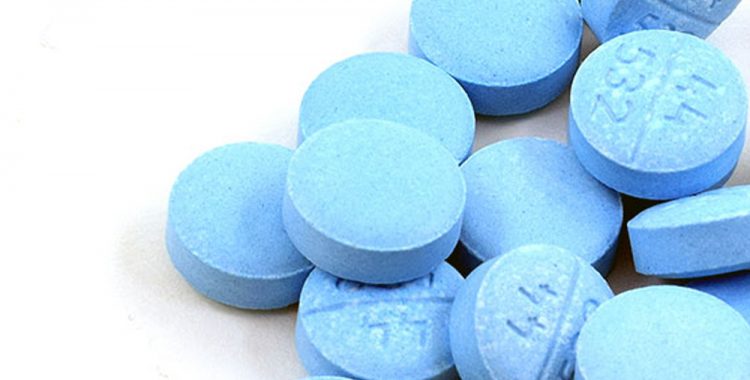
Klonopin is a benzodiazepine drug with the generic name clonazepam. As a benzodiazepine, it slows down the central nervous system, which has the effect of relaxing your brain. Because of that effect, Klonopin is an effective treatment for symptoms of anxiety disorders.
The drug is intended for short-term use only. It is not safe to take it for more than four weeks. Beyond that, the drug can be habit-forming, and you can become physically dependent on it quickly.
Once you have become dependent on Klonopin, quitting the drug will be much harder. The moment you stop taking it, you will experience unpleasant withdrawal symptoms as your brain struggles to adjust to the absence of the drug. If the discomfort becomes too much, you may end up taking Klonopin again just to make the withdrawal go away.
If you’re wondering what Klonopin withdrawal feels like, read on to find out.
What are the symptoms of withdrawal from Klonopin?
Klonopin withdrawal feels similar to alcohol withdrawal. The symptoms resemble those of a flu, and you may feel on edge and irritated. Specific withdrawal symptoms include:
 Irritability
Irritability- Sleeplessness
- Hallucinations
- Hand tremors
- Poor coordination
- Nausea
- Vomiting
- Sweating
- Increased pulse rate
- Increased body temperature
- Anxiety
- Panic attacks
- Seizures
- Coma
If left untreated, these withdrawal symptoms can turn fatal, particularly seizures and coma.
The symptoms you get depend on how severe your withdrawal is. Here are some factors influencing this:
- How long you have been on Klonopin
- How often you took the drug
- How much Klonopin you took each time
- The state of your physical and mental health
- Taking Klonopin with other substances
Rebound symptoms
 Klonopin is often prescribed to counteract anxiety and insomnia. When you experience withdrawal, these symptoms can come back more intensely than before you took the drug. These are called rebound symptoms.
Klonopin is often prescribed to counteract anxiety and insomnia. When you experience withdrawal, these symptoms can come back more intensely than before you took the drug. These are called rebound symptoms.
In some cases, patients have reported experiencing rebound anxiety as soon as they begin withdrawal. The anxiety ranges from mild nervousness to severe panic attacks.
Rebound symptoms often last 2 to 3 days before subsiding.
Post-acute withdrawal
Klonopin withdrawal comes in two phases. The first phase is called acute withdrawal, and it has the symptoms described above. In some cases, post-acute withdrawal follows, and it can last several months. Its symptoms include:
- Mood swings
- Irritability
- Anxiety
- Depression
- Restlessness
How long do the withdrawal symptoms last?
The first phase, called acute withdrawal, often lasts for 2 to 4 weeks. Most people develop only acute withdrawal. Some, however, progress into the second phase, called post-acute withdrawal. This phase can persist for 18 to 24 months.
The length of withdrawal depends on factors such as:
- How long you have been taking Klonopin
- How frequently you use the drug
- Underlying mental health conditions
- Pre-existing physical ailments
- Using other substances along with Klonopin
Withdrawal timeline
 The first signs of withdrawal appear from 1 to 3 days after you last took Klonopin. Usually, it’s during these days that you will notice anxiety and mood swings. You may also have trouble falling asleep or being fully rested at night.
The first signs of withdrawal appear from 1 to 3 days after you last took Klonopin. Usually, it’s during these days that you will notice anxiety and mood swings. You may also have trouble falling asleep or being fully rested at night.
From 7 to 14 days since the last dose, withdrawal symptoms often reach their peak. Common symptoms at this time are anxiety and irritability. If you quit cold turkey, you may additionally suffer from hallucinations, tremors, or seizures.
In most cases, withdrawal symptoms die down after 3 to 4 weeks. While you may still have symptoms of anxiety, the worst withdrawal symptoms are gone by this time.
After 2 months and beyond, it is still possible to have mild withdrawal symptoms. If you have a severe addiction to Klonopin, your symptoms at this time may still be significant.
Safely quitting Klonopin
Quitting Klonopin cold turkey is not a good idea. It only makes withdrawal more uncomfortable and more dangerous. In many cases, those who quit cold turkey were more prone to severe withdrawal symptoms.
Stopping your intake of the drug should be done progressively. This is known as “tapering off”, and it can take 2 to 3 weeks. Here, you will take less and less Klonopin until your body can tolerate having none of it at all. Tapering off can make withdrawal less uncomfortable, leaving only mild symptoms.
Tapering off is best done when you are supervised by medical professionals. Doctors will decrease your dose slowly over the course of a few weeks. They may adjust the dose reduction depending on how your body responds.
As an example, here are the results of a study done in 2010. Researchers studied the effects of tapering on 73 long-term Klonopin users. These individuals have been taking the drug for over 3 years to manage panic attacks, and they have become addicted to it. In the study, the researchers decreased each person’s daily dose by 0.5 mg every 2 weeks. Once each person’s dose was brought down to 1 mg per day, the researchers reduced the dose by 0.25 mg per week until each person was taking no more Klonopin. The researchers found that all 73 participants’ panic disorders improved, as well as their general well-being. None of them developed any major withdrawal symptoms.
In addition to a tapering routine, doctors may prescribe medications to further help in managing withdrawal. Medicines like levetiracetam, clonidine, and propranolol are used to reduce the most uncomfortable withdrawal symptoms, such as seizures and tremors.
What happens after quitting Klonopin?
Once you are not taking any Klonopin anymore, you may have to go through a series of behavioral therapies. Through these, you can overcome the cravings and triggers that make you want to take Klonopin.
Behavioral therapies are especially important if you have underlying mental health problems. Conditions like anxiety, depression, mood disorders, and others increase the chances of abusing drugs. But with behavioral therapies, you can get help in handling these conditions without having to resort to addictive substances.
In any case, the goal of behavioral therapies is to help you return to live a drug-free lifestyle. Contact a treatment provider near you and get help as early as now.


